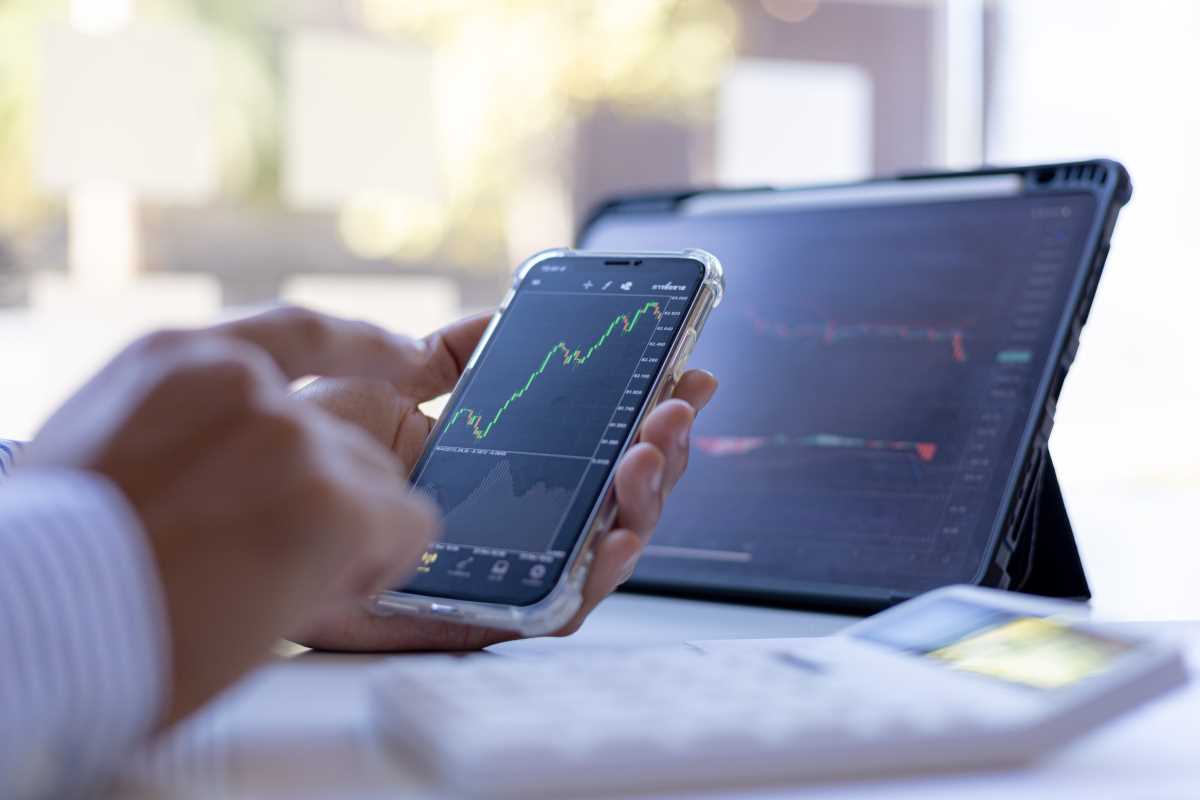Building wealth often feels like an intimidating goal, especially when you don’t have a lot of extra cash at the end of the month. But what if the change hiding in your couch cushions, rounding up from your daily Starbucks run, or the leftover cents from your grocery store trip could help you get started? That’s where micro-investing comes in.
Micro-investing apps are transforming the way people think about investing, allowing anyone to invest small amounts of money—even spare change. Here’s how spare change investing works, its benefits, and how to get started using popular platforms like Acorns, Stash, and Robinhood.
What Is Micro-Investing?
Micro-investing allows you to start investing with small sums, often as little as a few cents. Gone are the days when you needed hundreds or thousands of dollars to buy stock. Instead, micro-investing apps allow you to invest fractional amounts of money effortlessly, turning spare change or small contributions into investments in stocks, ETFs, or other financial products.
For example, if you buy a coffee for $4.50, many micro-investing platforms automatically “round up” your purchase to the nearest dollar and invest the extra $0.50. Over time, these small contributions can really add up, especially when combined with compounding interest.
How Spare Change Investing Works
Spare change investing is one of the simplest concepts in personal finance, designed to effortlessly integrate investing into your daily life. Here’s how it works step-by-step on most platforms:
- Link Your Cards: You connect your savings, checking account, or debit/credit card to the app.
- Round-Up Contributions: Every time you make a purchase, the app rounds the transaction amount to the nearest dollar. For instance, if you spent $27.35, the extra $0.65 would be set aside.
- Automatic Investments: Once the round-ups reach a certain threshold (e.g., $5), the app invests that amount into a diversified portfolio or financial product of your choice.
- Sit Back and Watch It Grow: Over time, these automatic contributions accumulate and begin to generate returns, growing alongside the markets you’re invested in.
Spare change investing combines simplicity with powerful habit-building, making it a great introduction for beginner investors.
Why Use Micro-Investing Apps?
Micro-investing isn’t just about convenience; it offers layers of benefits that make it an excellent starting point for individuals looking to dip their toes into the investing world.
1. Accessibility for All Budgets
One of the biggest barriers to investing is the misconception that you need a substantial amount of money to get started. Micro-investing eliminates that hurdle. Whether you have just a few extra dollars each month or you’re operating on a tight budget, these apps make investing accessible for everyone.
If you’ve been waiting for the “right time” to start investing but don’t have a large lump sum, micro-investing bridges that gap.
2. Simplicity and Automation
Micro-investing apps are designed for ease of use. They automate the process, so you don’t have to actively think about saving or investing. Once you set up your account and choose a preferred investment approach, the app handles everything in the background.
This hands-off approach is perfect for anyone who wants to start investing but feels overwhelmed by financial jargon or market complexities.
3. Build Better Money Habits
Investing small amounts regularly helps you develop long-term financial habits. The act of rounding up your purchases or setting aside a fixed monthly contribution can lead to a mindset shift around saving and money management.
What’s more, seeing your investments grow, even in small increments, can create positive momentum that motivates you to take even bigger steps toward financial independence.
4. Diversification Without the Cost
Many micro-investing platforms offer access to prebuilt portfolios filled with diversified investments, such as ETFs. For example, instead of putting all your money into a single company’s stock, micro-investing apps spread it across multiple assets. This lowers your risk and builds your portfolio in a balanced, manageable way—even with your spare change.
Popular Micro-Investing Apps
There are a number of standout micro-investing apps available to help you invest spare change and small amounts efficiently. Here are three of the most popular options to consider.
1. Acorns
Acorns is arguably the most well-known micro-investing app, famous for its automatic round-up feature. Here’s how it works:
- Round-Up Savings: Connect your credit or debit card, and Acorns will automatically round up your transactions to the nearest dollar and invest the spare change.
- Prebuilt Portfolios: Acorns offers a variety of portfolios based on your risk tolerance, ranging from conservative to aggressive.
- Monthly Fee: Plans start as low as $3 per month, which includes access to investment portfolios, retirement accounts, and even a checking account option.
Acorns is ideal for people who want a fully automated and beginner-friendly way to start investing.
2. Stash
Stash combines micro-investing with educational tools, making it perfect for individuals who want to learn more about how investing works while growing their money.
- Flexible Deposits: With Stash, you can make round-up investments or manually deposit small amounts into your account.
- Fractional Shares: Buy tiny portions of big-name stocks or ETFs.
- Educational Content: Stash offers financial advice and resources tailored to your personal goals.
- Monthly Fee: Plans start at $3/month, similar to Acorns.
Stash helps users to take a more active role in their investments, giving them the flexibility to choose from a wide range of assets while offering tools to build better money habits.
3. Robinhood
While Robinhood originally gained fame as a no-commission trading platform, it’s also a popular choice for micro-investing thanks to features like fractional shares.
- No Fees: Unlike Acorns and Stash, Robinhood does not charge account maintenance or subscription fees.
- Fractional Investing: Buy tiny fractions of high-value stocks, such as Amazon or Tesla, with as little as $1.
- More Control: Robinhood is more self-directed, giving users full control over which stocks, ETFs, or cryptocurrencies they want to buy.
Robinhood is a great choice for those who want low-cost flexibility and are ready to take a more hands-on approach.
Tips for Getting Started
Starting your micro-investing journey is easy, but there are a few steps to ensure you’re making the most of your spare change investments.
1. Set Realistic Expectations
Keep in mind that micro-investing is a long-term game. While your spare change may seem like peanuts initially, consistency and time are key. Start with small contributions, and remember that compounding returns will magnify your investments over time.
2. Choose the Right App for Your Needs
Each platform has different features, fees, and investment options. If you’re a hands-off investor, Acorns might be the way to go. If you want more control, Robinhood could be a better fit. Take your time to evaluate each app before committing.
3. Track Your Progress
Most apps offer tools to monitor your investments and portfolio growth. Check in periodically to see how your spare change is growing. This will keep you motivated and allow you to make adjustments to your strategy if needed.
4. Don’t Forget Your Overall Budget
Micro-investing is designed to work seamlessly within your existing financial habits. However, it’s still essential to maintain a balanced budget. Make sure you’re meeting all your essential expenses, building an emergency fund, and paying down debt before ramping up your investments.
Turning Spare Change Into Long-Term Wealth
It doesn’t matter if you’re rounding up loose change or depositing $10 here and there. What matters is taking that first step. Every cent invested today is one more building block for a more secure and prosperous future.







